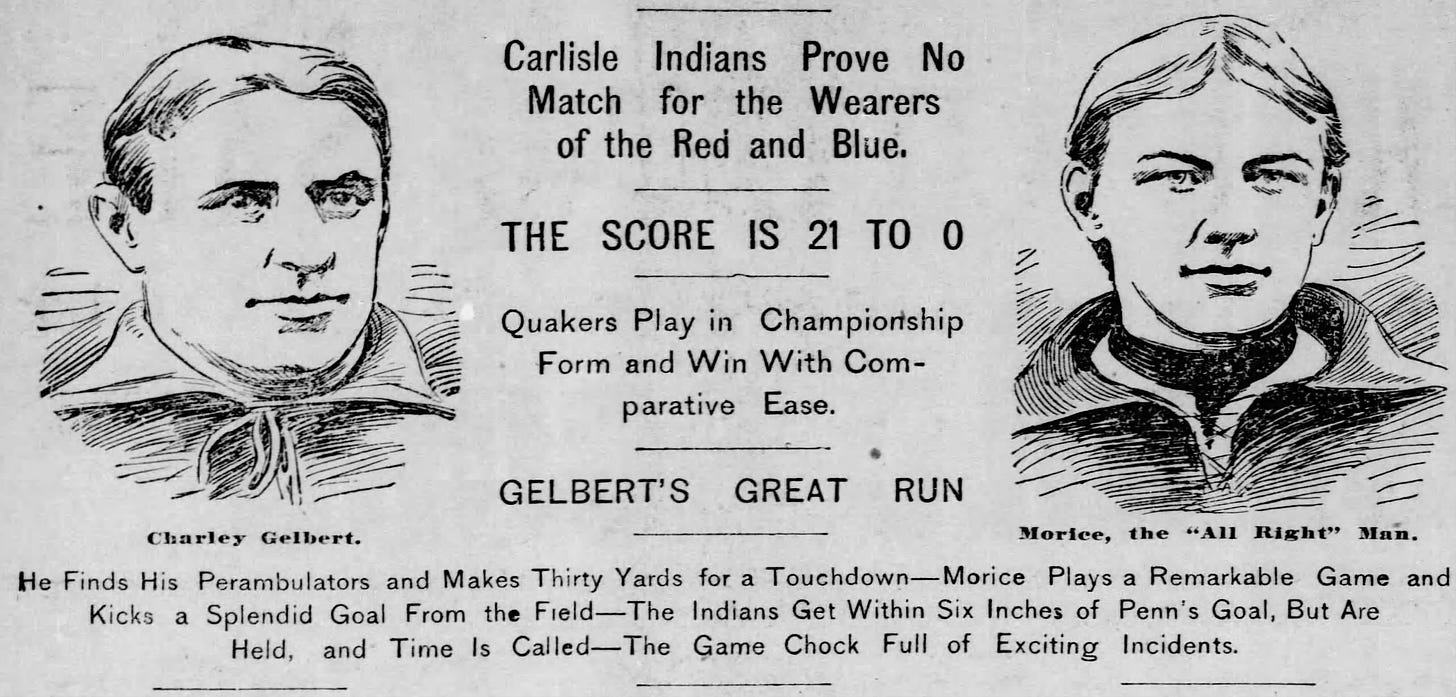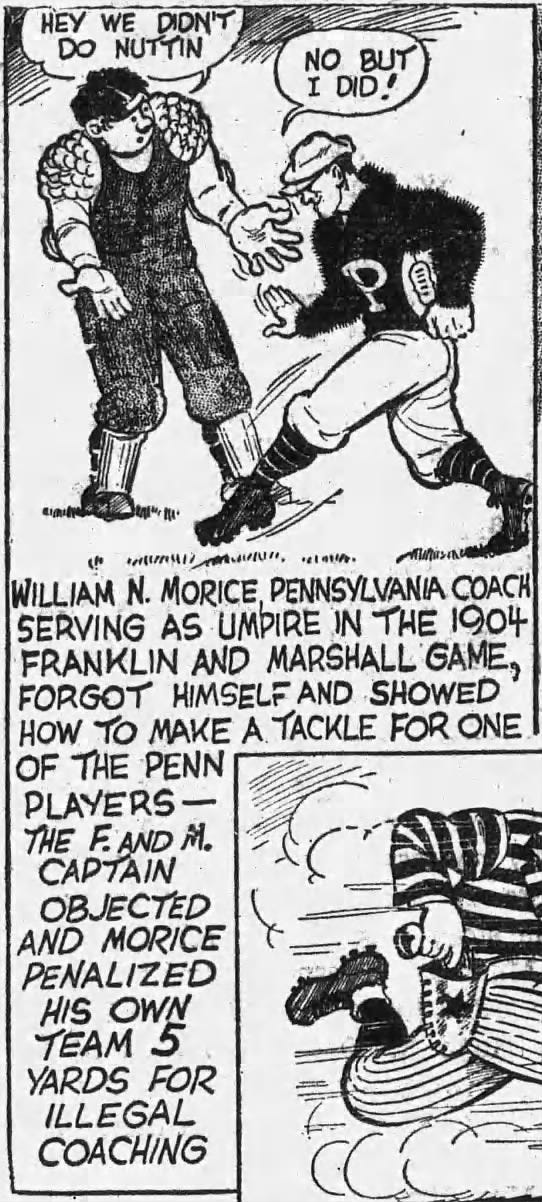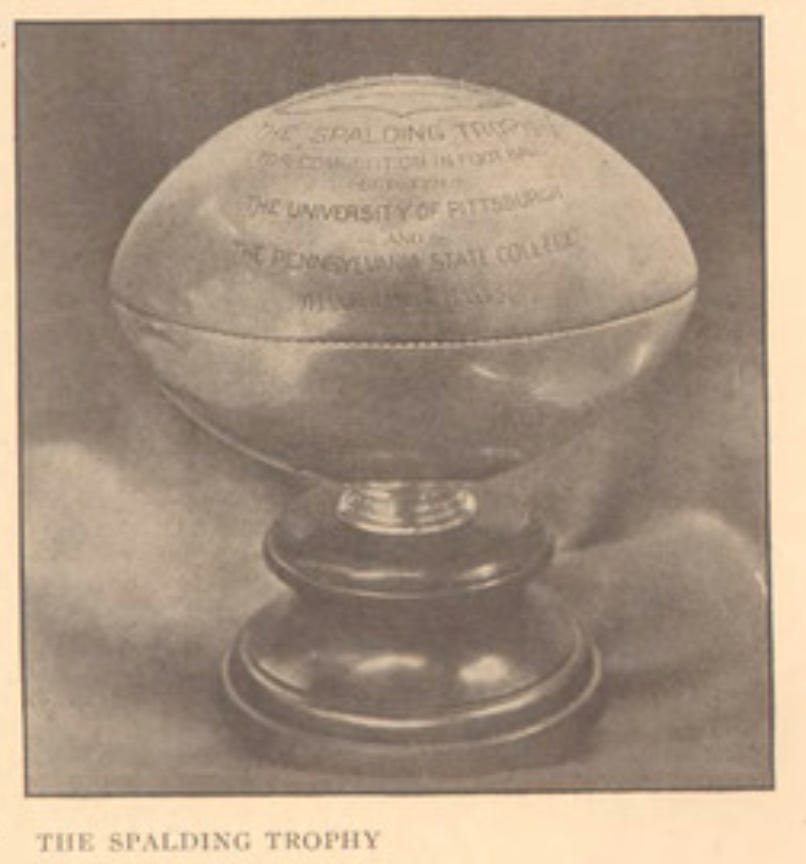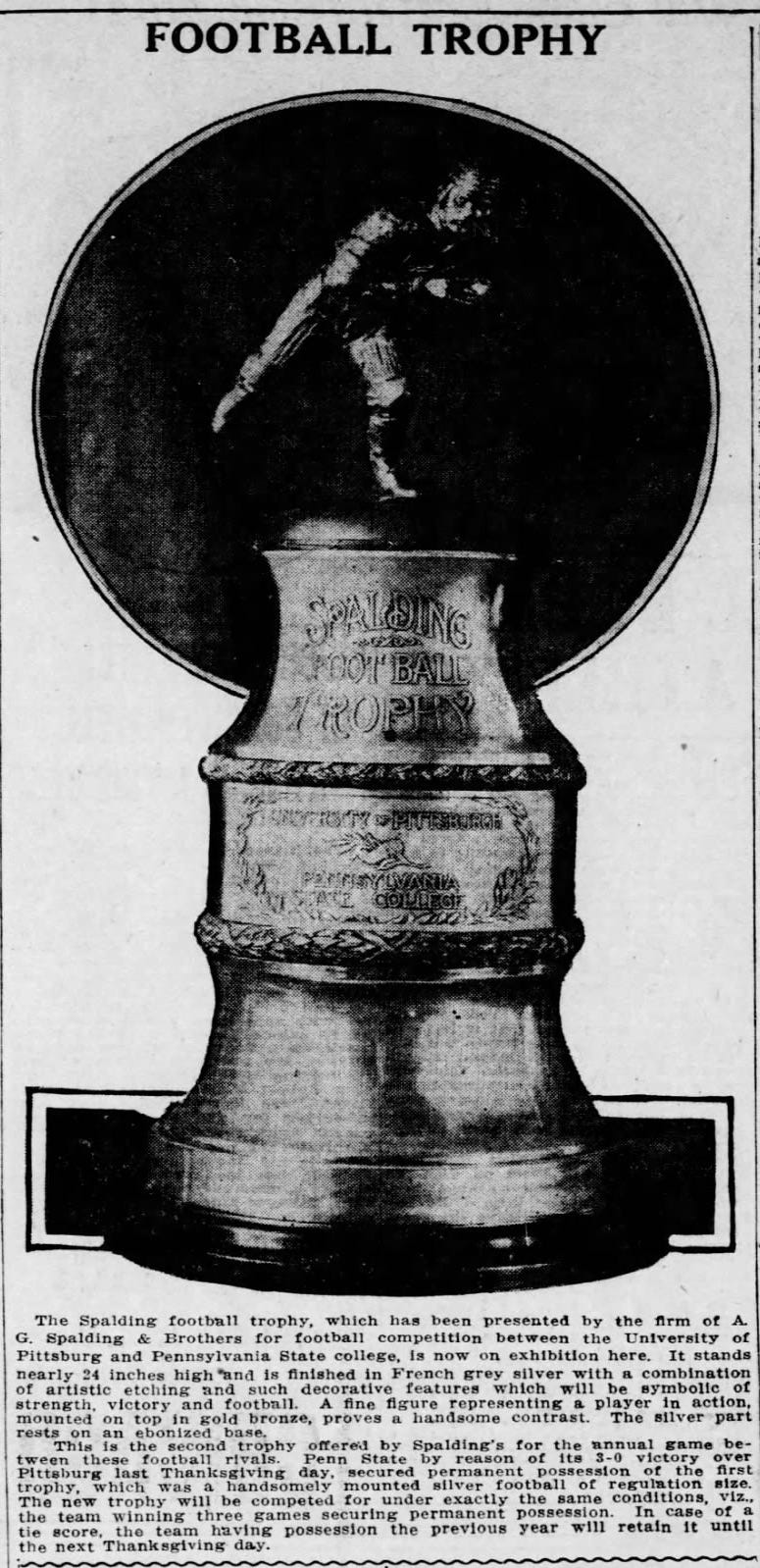Today's Tidbit... Factoid Feast III
Happy New Year!
As discussed in Factoid Feast I and Factoid Feast II, my searches through football history sometimes take me to topics too important to ignore but too minor to Tidbit. Such nuggets are factoids, three of which are shared with you today.
Bill Morice, Player-Coach-Official
Three elements of football have disappeared since the turn of the last century:
Officials back then were not certified; most were former players.
Former players often returned to their alma maters as volunteers to help the captain train the team during the preseason and as needed during the season.
Coaches were prohibited from instructing their players during the game since the captains ran the team during games.
All three elements came together in 1904 when Bill Morice, a former Penn halfback who was a volunteer coach at Penn, was chosen to umpire Penn's game with Franklin & Marshall.
Penn dominated and won the game 34-0. However, there came a point when Penn substituted a player into the game, and the substitute quickly made a mistake. Morice fell into his volunteer coaching role without thinking and gave the player instructions. Realizing his mistake, Morice returned to being an umpire by penalizing Penn for coaching from the sideline or, more accurately, for coaching inside the sidelines.
1908 Pitt-Carlisle Snow Game
Pitt and Carlisle met in 1908 at Exposition Park in Pittsburgh. It was a tight game, with Carlisle winning based on a touchdown by Little Big Man and a conversion by Jim Thorpe. The unusual aspect of the game was that the field was snow-covered throughout the game. To help the officials rule on plays going out of bounds, the grounds crew placed small American flags every five yards along the sidelines and goal lines.
Spalding Trophy
Pitt met Penn State two weeks after defeating Carlisle in the snow game. To mark the rivalry, a well-known sporting goods company donated the Spalding Trophy, a traveling trophy intended to go to the winner of each year's game. It would become the permanent possession of the first team to win the game three times.
Penn State won the 1908 game 12-6 and the 1909 game 6-0. In 1910, Pitt, then known as the Western University of Pennsylvania, and its teams, nicknamed the WUPs, won 11-0. The W.U.P. became Pitt in 1911 but lost to Penn State 3-0, so the Nittany Lions took permanent possession of the Spalding Trophy. In 1912, Spalding donated a second trophy to be competed for under the same rules.
Penn State won the game in 1912, topping Pitt by a 3-0 score, and they did so again in 1913 by a 38-0 margin. However, their fortunes turned in 1914 when Pitt began a six-game winning streak, allowing the Panthers to possess the second Spalding Trophy permanently.
While each team gained permanent possession of one Spalding Trophy, the tradition ended there as a third Spalding Trophy never materialized.
Football Archaeology is reader-supported. Click here to buy one of my books or otherwise support the site.







Wow! Great stories! Especially the Morice coaching from the Umpire position one and then penalizing the Quakers. Lol. Flags on the snow overed field was a genius move and resourceful when you think of it. Love these stories.
Enjoyed!
A future post idea. You’ve touched on game length/timing. After the complaints about late finish of Sugar Bowl which went 3:50 vs 3:32 of Rose with OT might be good to visit again such as college going from 15 to 20 minute half and NFL only 12 minutes